The Impact of AI On SEO With Tom Winter
In this episode, we’re discussing AI’s impacts on the world of SEO and what further changes can be expected down the road. We ask questions like:...
8 min read
 Brent Tripp
:
March 15, 2023
Brent Tripp
:
March 15, 2023
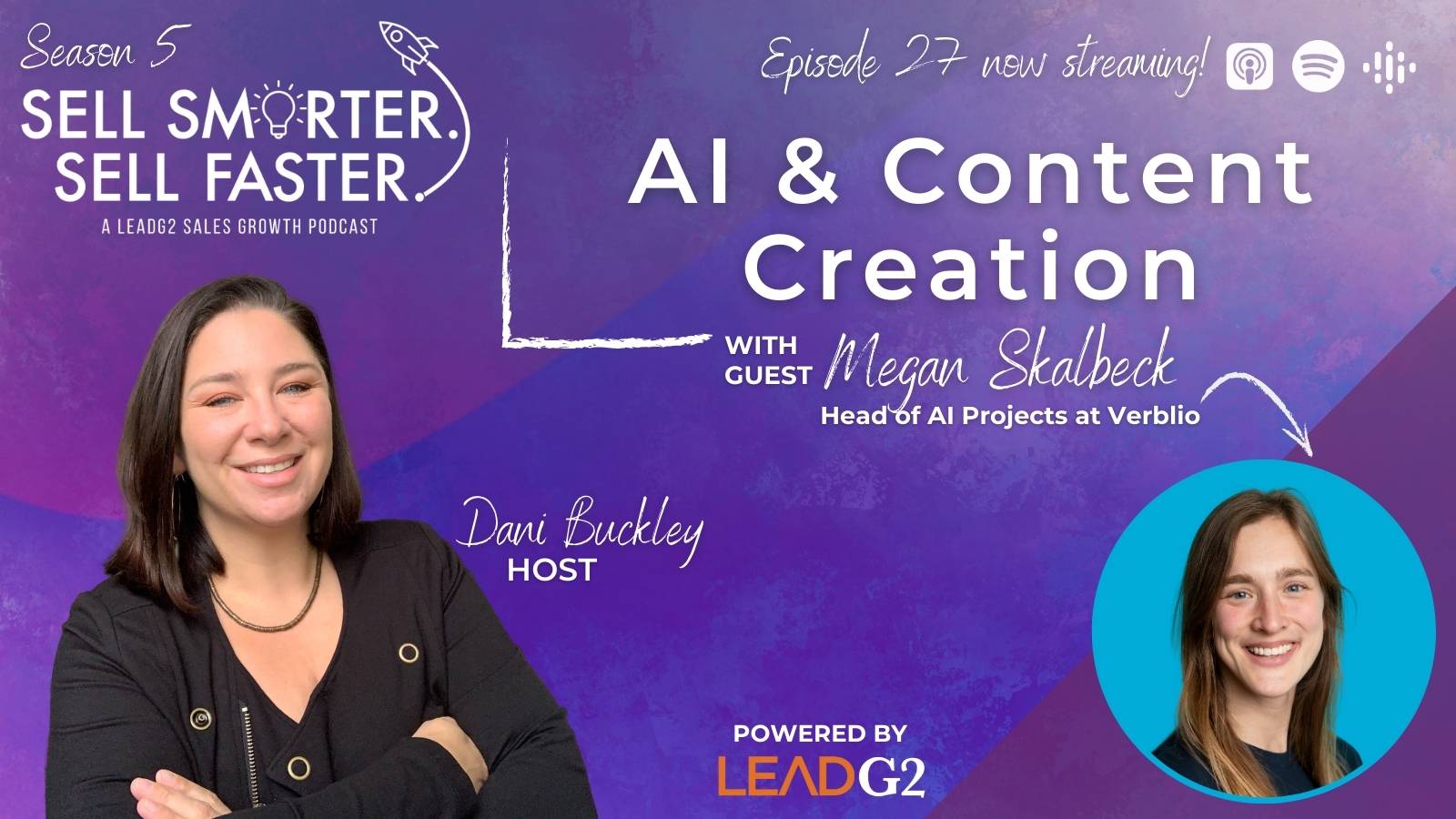
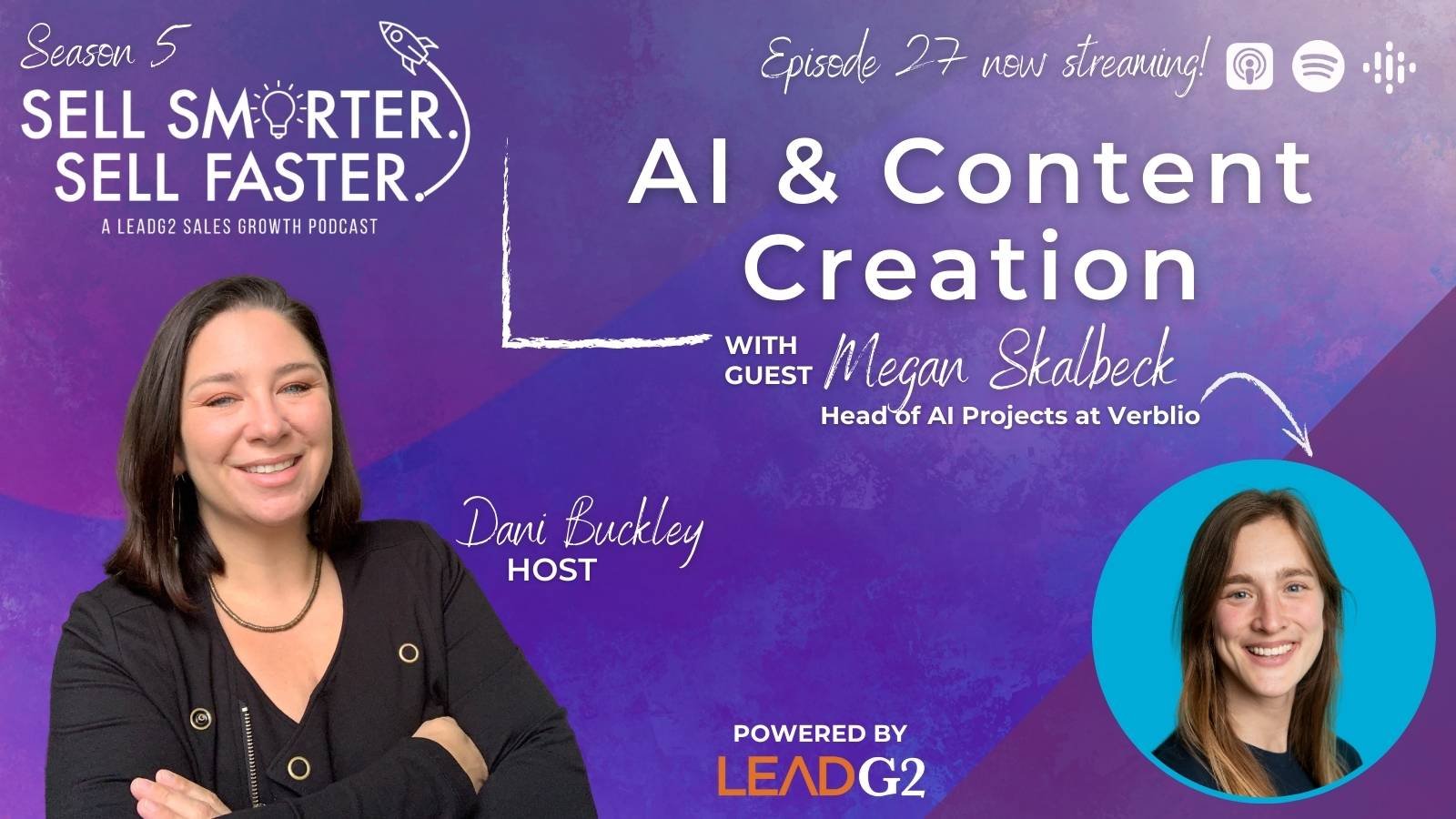
In this episode of the Sell Smarter. Sell Faster. podcast, we’re exploring the ever-changing role of artificial intelligence (AI) in content creation. Are the current capabilities of AI tools all that they are cracked up to be? Is AI a boon to the content creation industry or a disruptor? Will ChatGPT replace us all?!
Joining Dani to break it all down is Megan Skalbeck, Head of AI Projects at Verblio.
Megan brings so many amazing points to the table, like:
Diving into the conversation, Dani asks, “So, how do you view the current capabilities of AI? Especially when we're talking about copywriting for marketing, or for sales. What are you seeing there?”
“It can do incredible stuff to be perfectly frank. I mean, we can get down on it for the mistakes. We've all seen screenshots of crazy things that it generates, but when you think about what it's actually doing and what it's capable of, it is incredible. It is far from perfect, and it is not to be left to its own devices, but it can do some cool stuff and can absolutely help with copywriting and content writing. It is absolutely changing the content creation industry. I mean, that's why I was put to work on this full-time. It was like, ‘Okay, this is going to change everything that we do. How should we be using it? Um, and, and how should we be using it well?"
“It's really easy to use AI right now. I mean, it's essentially free, right? You can go create content with it. But what we wanted to know, is how can we be doing this more responsibly, creating content that still meets our quality standards, creating content that is factually accurate, free of bias that adheres to brand guidelines, all of those things that actually provide value to readers."
“Totally,” Dani says. “And I think before we hit record on this podcast, we were talking a little about how this is going to air maybe a month or a little bit more after we're talking today. So, I think it's important to note that a lot can happen in a month. So, the questions I ask today, we won't hold against you if they've improved your change in the coming weeks.”
“We specifically talk to a lot of business leaders, sales leaders, and marketing leaders,” Dani says. “What are some of the specific things that you think those folks can and should be using AI for right now when it comes to content creation?”
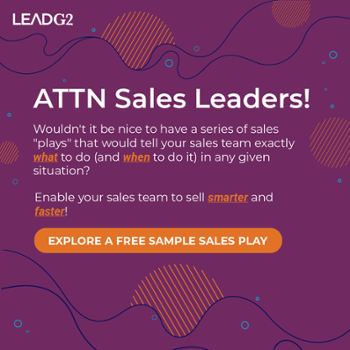 “So, you should absolutely be playing around with some AI tools if you are trying to create say like one-off pieces of content,” Megan says. “I've looked at a lot of AI tools and they all change their pricing and their plans every month or so it seems. I'm sure one of them is currently offering a free trial that you use to play around with what it can do and get a sense of what it's capable of. For a salesperson, if you have an internal writeup after a sales call and you send that around to your team, you could use that internal writeup, feed that into an AI, and it could probably generate a pretty decent follow-up email for you, right?"
“So, you should absolutely be playing around with some AI tools if you are trying to create say like one-off pieces of content,” Megan says. “I've looked at a lot of AI tools and they all change their pricing and their plans every month or so it seems. I'm sure one of them is currently offering a free trial that you use to play around with what it can do and get a sense of what it's capable of. For a salesperson, if you have an internal writeup after a sales call and you send that around to your team, you could use that internal writeup, feed that into an AI, and it could probably generate a pretty decent follow-up email for you, right?"
“You know, it's great for summarizing, it's great for coming up with 10 different email subject line ideas for you. If you want to test different things in your cold emails, it's great for coming up with different versions of text. So, if you kind of have your version, but again, you want to maybe test it again against different things, it's got a lot of kinds of narrow applications like that."
“And then for larger content creation, the most important thing that we've found is having a human in the loop. So, it's not okay for AI to generate this full article, you give it to the human and they spend a little bit of time polishing it. And it's also not okay for the human to write the article, you give it to the AI, and the AI does its thing. It's a true back-and-forth. That's the way to get the best results."
“We've done a lot of playing around with our prompt engineering to figure out really the best way of blending those two. It's been a lot of work, and if you are wanting to do this at scale, I just know it's either going to be a lot of work, or you're going to want to work with somebody who's already done the work. It's important to know, again, for any type of longer content, having the human involved throughout that entire process is crucial. But for one-off things, shorter copy things? Play around with it. See what it can do and also know that you're going to need to review every single thing it produces.”
Dani asks, “What are the gaps or shortcomings of this that we need to be really sure folks are aware of? You talked about making sure there's a human involved in the whole process. That's a big one. What else?”
“I would say one of the biggest risks of AI is the factual accuracy piece. Because AI will say things and the hardest part of it is, it will say it with such confidence, right? We'll write it out and it will sound good and it'll sound like something you've read before and you know, the number it includes, or what it says is simply false. That is the single biggest kind of risk to be aware of."
“Anytime the AI is making a claim of any kind, you need a human checking that and citing the source to make sure that it's accurate. Because, again, the AI won't be providing its sources either."
“The other thing is, right now ChatGPT is free. So, it's easy for people to think that ‘Okay, this is a totally free tool.’ Be mindful of the editing time and the review time that you're going to have to spend. If you're used to working with a freelance writer and you're like, ‘Well, okay, now I don't need a freelance writer, I can get my content from ChatGPT,’ know that you're going to be spending a lot of time reviewing that."
“And it's also much higher-stakes editing. If your freelancer submits something and you miss a few things editing, whatever, it's a slightly more mediocre article. If you don't review what ChatGPT says, you could be putting false information out there. So, the stakes are very different."
"Then the other big gap obviously of AI is that it is not capable of generating new novel, original thinking. That's simply because it was trained to predict the next word based on what it is seeing. It was designed to write stuff like what has come before. So, by definition, it's not going to be appropriate for your thought leadership article."
“But again, the factual accuracy is just the biggest one because that's a brand risk. That's misinformation. There's a whole can of worms there.”
“So, we touched on shortcomings and stuff,” Dani says. “Are there any big mistakes that you're seeing in how folks are using AI right now that you want to point out?”
“The biggest general mistake I see is treating it as this black-and-white issue,” Megan says. “I see so many people who either think AI is this free silver bullet that's going to solve all your needs, or that AI is universally bad, ‘I'm not gonna touch it with a 10-foot pole.’
“Neither of those views in, in my mind, is correct. There are times to use it. There are times not to. For us, for example, even within a single client's content, there are types of content where our hybrid approach is appropriate. And there are types where actually no, we still need it to be only our human writers."
“Within a single person's workflow, there could be different parts that are appropriate for AI, and different parts that aren't. I think every single person probably has some use cases where AI can help them out. But nobody can be using it for everything. There's a lot more middle ground there and I think it's easy for people to take a black-or-white approach.”
“I love that,” Dani says. “I'm glad you said that because that's what we're seeing with our clients. It's like, ‘No, we don't want to, this is scary, this is too risky, etc.,’ and [others are reacting like], ‘Why do we need anybody, we can just do everything through AI!"
“So, I know you're really passionate about this stuff, so tell us, what are you most excited about right now?” Dani asks. “What is getting you really pumped up about AI?”
“Well, the first thing that's so cool is just how quickly it's changing,” Megan says. “That means, probably in a week, I'll be excited about something that at this point didn't even exist. We surveyed marketers last winter and already the results have, you know, are pretty out of date, right? That was pre-ChatGPT. But even with ChatGPT now, Bing has already advanced that a lot by being connected to the web. So, the pace of change is really cool."
“One somewhat nerdy problem that is cool and fascinating to me is just the idea that...it's trained on existing content from the internet, we're actually going to run into a problem where we run out of content to train our models on, which is a wild thought."
 “If you think about how much content is out there, that is going to be one of our biggest limitations in like new and improved AI models, is just not having enough content to train them on. And we don't want to train them on AI content, right? That would just kind of turn into this game of telephone where we get further and further from the original [source of] human writing content."
“If you think about how much content is out there, that is going to be one of our biggest limitations in like new and improved AI models, is just not having enough content to train them on. And we don't want to train them on AI content, right? That would just kind of turn into this game of telephone where we get further and further from the original [source of] human writing content."
“But I think that's going to be cool. Because I think that's gonna probably require some changes to the architecture of the models and how we actually build them out in order to get around that limitation of like, we just don't have enough data. So, on the tech/engineering side, that's just a cool problem to me."
“I'm going to throw in a question that is pretty ‘techy,’ but I'm curious,” Dani continues. “So, if AI is using information intelligence, content on the internet, at what point do we know that it is AI content that's feeding AI? How does it not become this loop?"
“So, that is why AI detection has really gained prominence and that's why you've probably seen some tools out there around that. That's important for a lot of people, right? For us in content creation, we want to know that we're publishing something that was written by a human. We think maybe Google might potentially care at some point and penalize AI-generated content down the line."
“So, there's kind of those immediate business reasons, but there's also this task of keeping AI-generated content out of future training sets. That's why OpenAI recently released its AI detection tool. And that's why I think they've been working really hard on that, so that when they train future models, they can run this AI detection tool on the content they're giving it and make sure that they're not feeding it something that is produced by AI."
“Very interesting,” Dani says. “I could sit and talk about this all day, but we won't. So, just to close this out, is there anything else that we haven't touched on that you want to address to our audience? Any closing thoughts on this?”
“I will just say, obviously, I'm super excited about AI and think people should try it out with the caveat that you need to be reviewing everything.
"I also want to point out that people are slapping AI on everything nowadays. I've been looking at a lot of these tools and experimenting with them, and the number of times when I go to a website and try to find anything in their information about the actual tech behind it or what they're doing with the model or anything like that, there’s just nothing."
“So, it's easy to say something's AI when it's really just an interface on top of Jasper or something like that. Or you're just using the algorithm and calling it AI. If you want to dig into these tools, look for the people who are actually talking about the tech, the experiments that they've done, what they're trying with it, and what they're learning.
“Nobody has all the answers to this, right? And everyone's iterating as we go. Just be mindful of what tools you're using, if it's real AI, and if they're really doing something cool with it, or if they're just kind of slapping that on their website.”
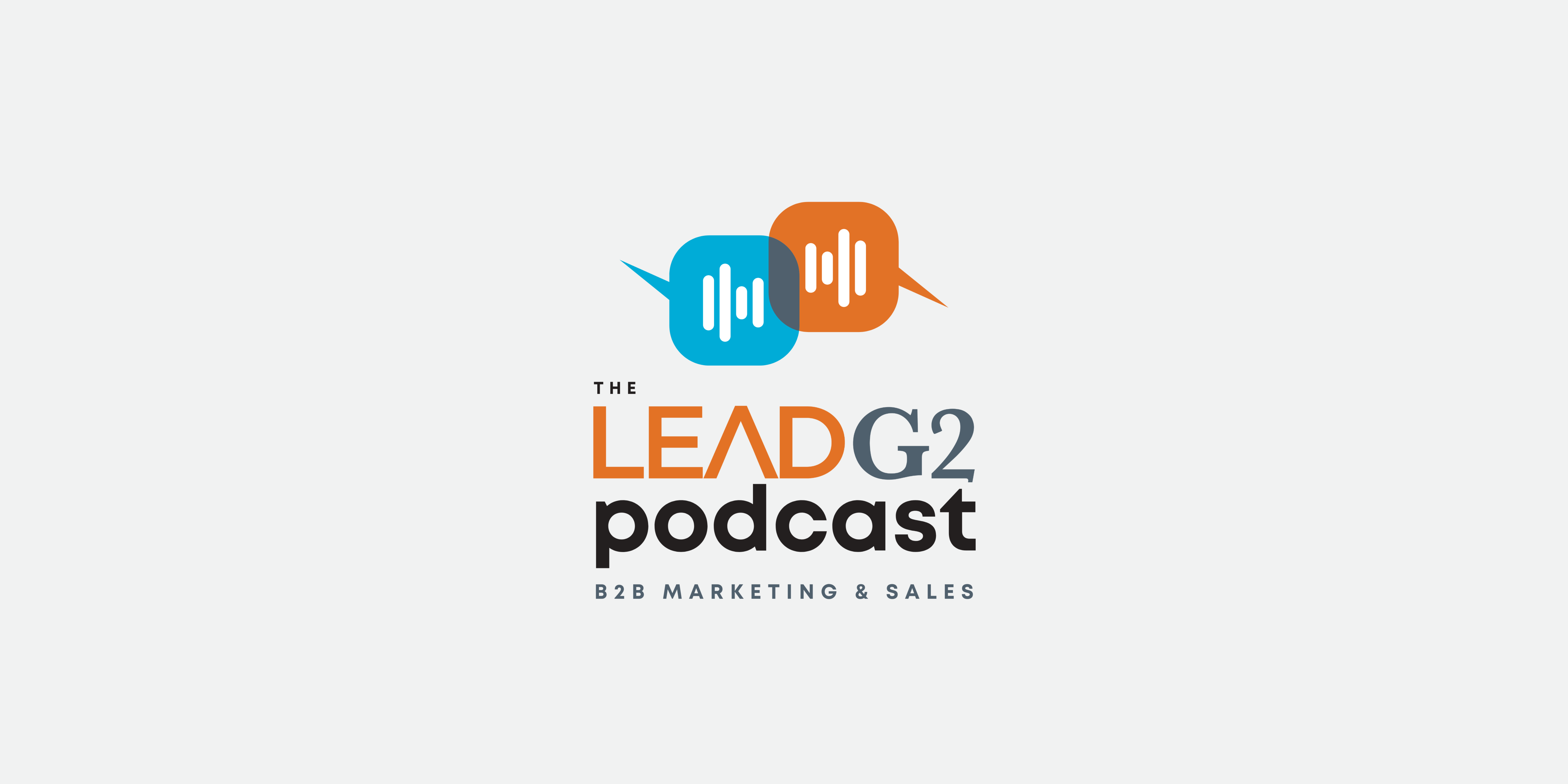
In this episode, we’re discussing AI’s impacts on the world of SEO and what further changes can be expected down the road. We ask questions like:...
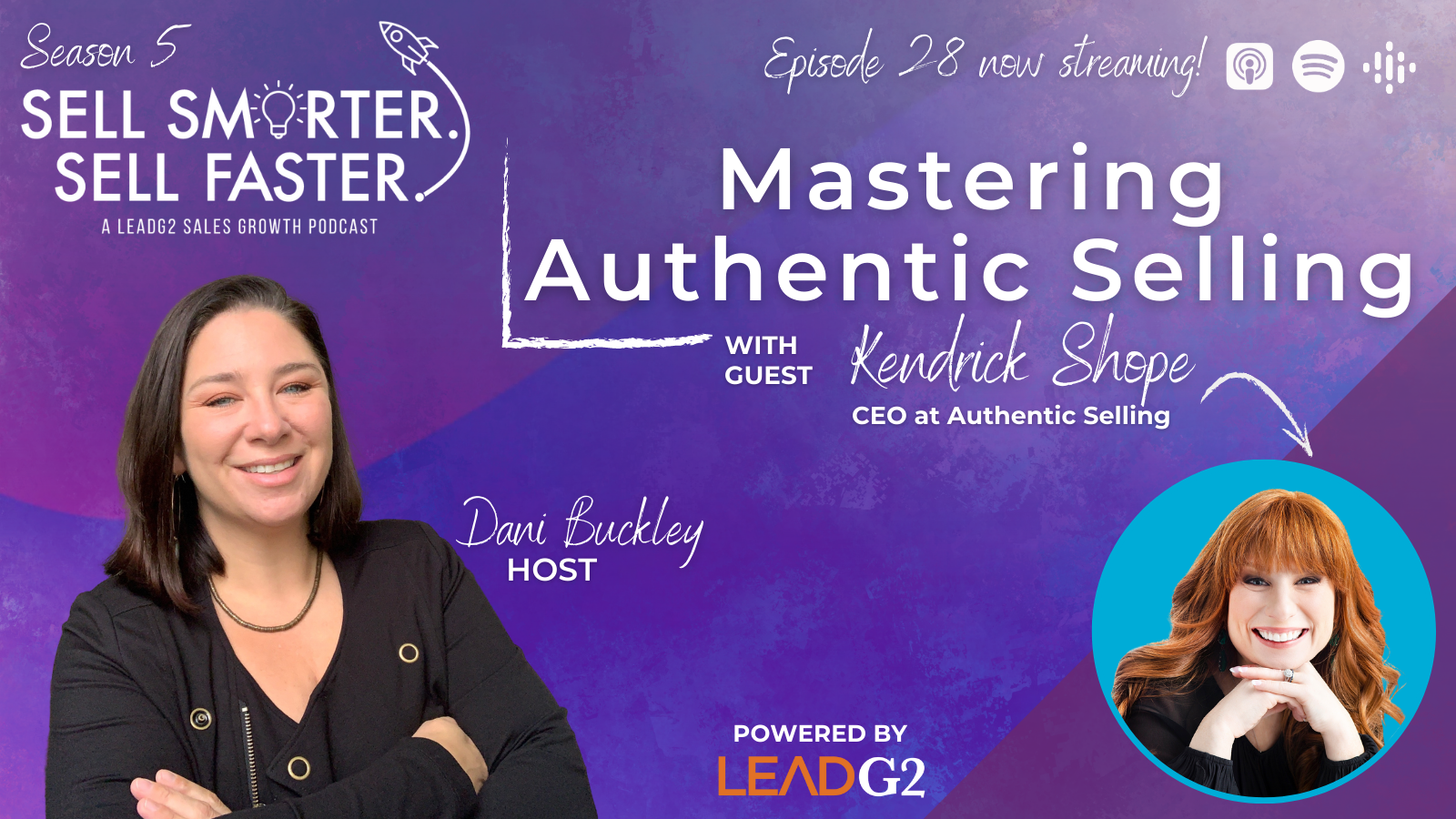
In this episode of Sell Smarter, Sell Faster, we’re digging into the world of Authentic Selling. What is it and how can you hone in on this as a...